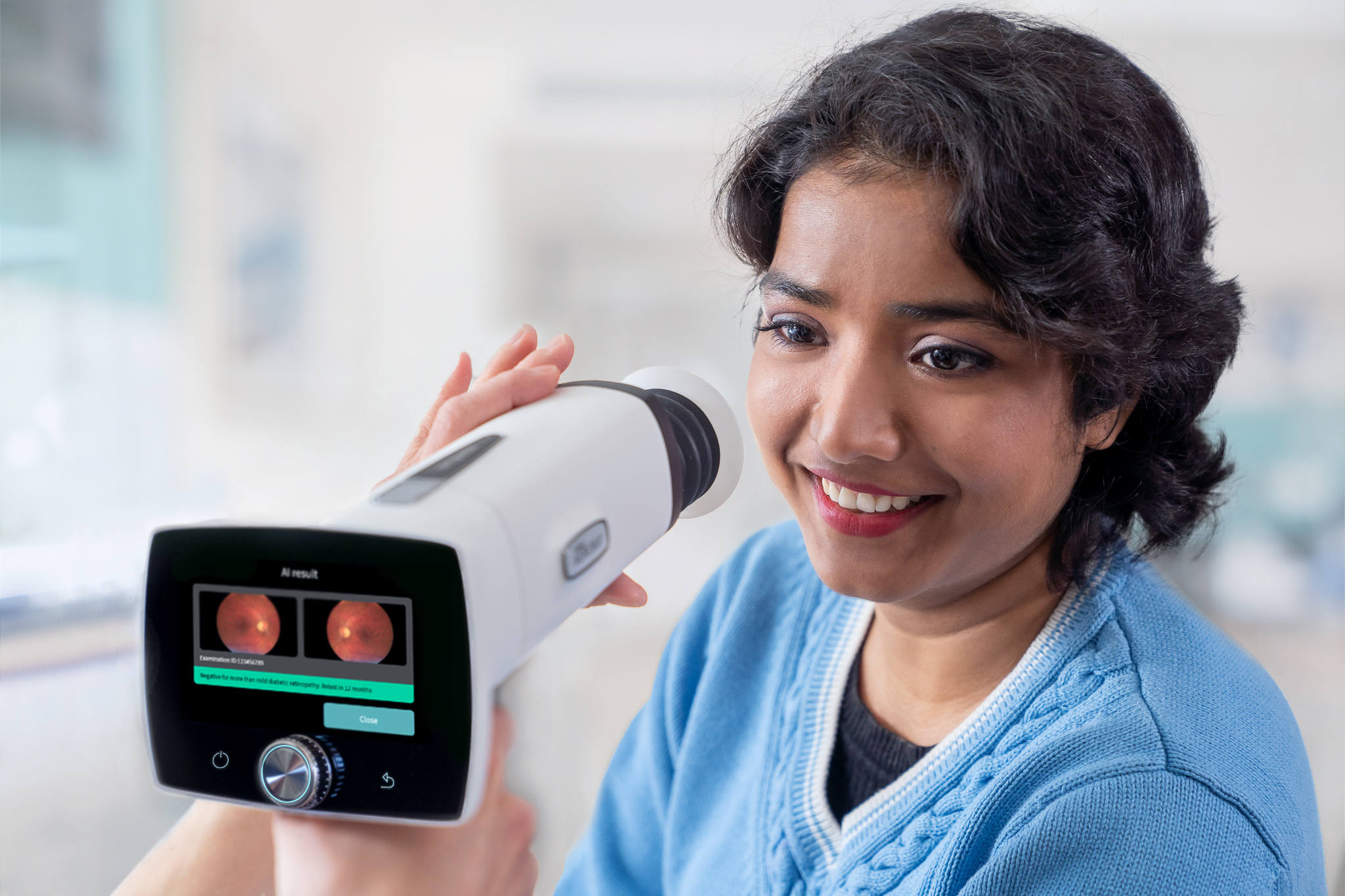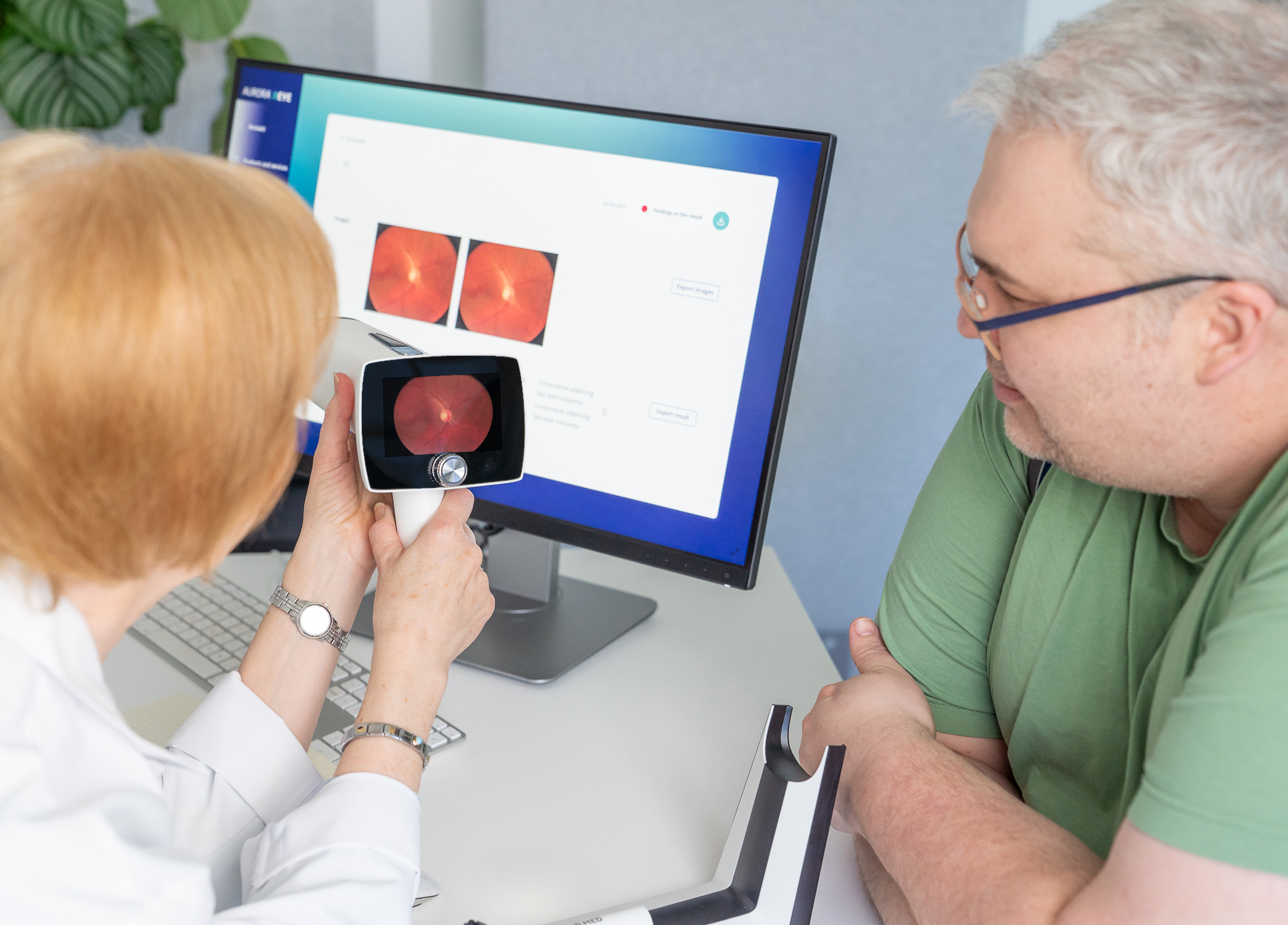Sources: 1. Kropp M, Golubnitschaja O, Mazurakova A, Koklesova L, Sargheini N, Vo TKS, de Clerck E, Polivka J Jr, Potuznik P, Polivka J, Stetkarova I, Kubatka P, Thumann G. Diabetic retinopathy as the leading cause of blindness and early predictor of cascading complications-risks and mitigation. EPMA J. 2023 Feb 13;14(1):21-42. doi: 10.1007/s13167-023-00314-8. PMID: 36866156; PMCID: PMC9971534. 2. https://www.cdc.gov/diabetes/data/statistics-report/index.html Accessed [18 April 2024] 3. Fathy C, Patel S, Sternberg P Jr, Kohanim S. Disparities in Adherence to Screening Guidelines for Diabetic Retinopathy in the United States: A Comprehensive Review and Guide for Future Directions. Semin Ophthalmol. 2016;31(4):364-77. doi: 10.3109/08820538.2016.1154170. Epub 2016 Apr 26. PMID: 27116205. 4. https://www.accessdata.fda.gov/cdrh_docs/pdf24/K240058.pdf 5. Schoenfeld ER, Greene JM, Wu SY, Leske MC. Patterns of adherence to diabetes vision care guidelines: Baseline findings from the Diabetic Retinopathy Awareness Program. Ophthalmology. 2001;108:563–571. 6. National Committee for Quality Assurance (NCQA) website. https://www.ncqa.org/hedis/measures/comprehensive-diabetes-care/ Accessed [18 April 2024] 7. Abràmoff MD, Roehrenbeck C, Trujillo S, et al. A reimbursement framework for artificial intelligence in healthcare. NPJ Digit Med. 2022;5(1):72. 8. Fairless E, Nwanyanwu K. Barriers to and Facilitators of Diabetic Retinopathy Screening Utilization in a High-Risk Population. J Racial Ethn Health Disparities. 2019;6(6):1244-1249 9. Abràmoff MD, Roehrenbeck C, Trujillo S, et al. A reimbursement framework for artificial intelligence in healthcare. NPJ Digit Med. 2022;5(1):72. 10. National Committee for Quality Assurance (NCQA) website. https://www.ncqa.org/blog/hedis-2022-see-whats-new-whats-changed-and-whats-retired/ Accessed [18 April 2024]

